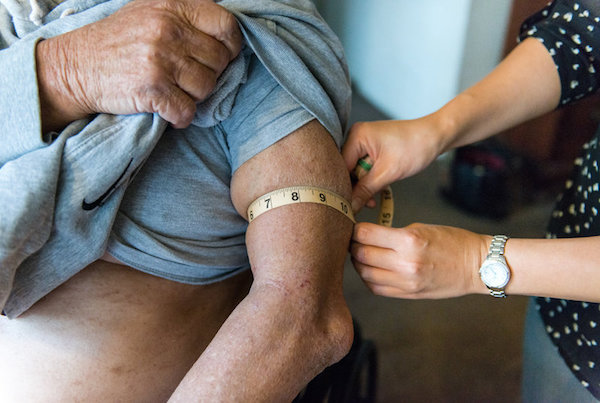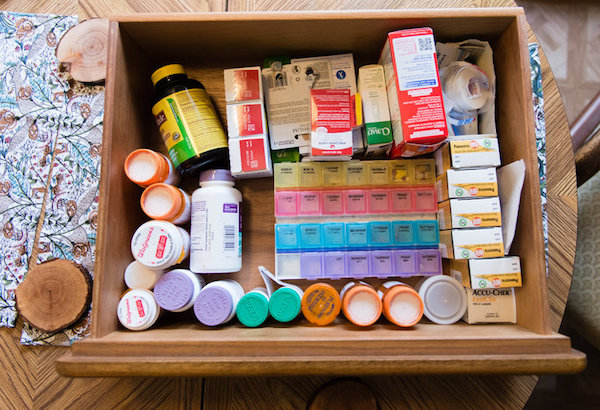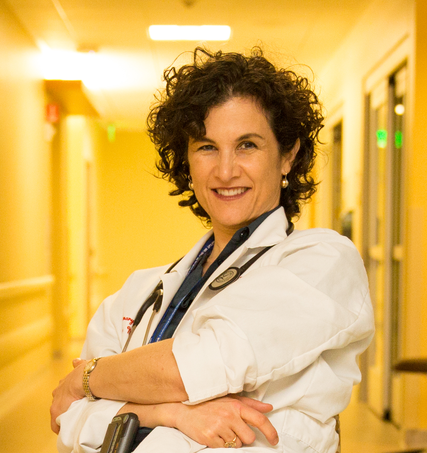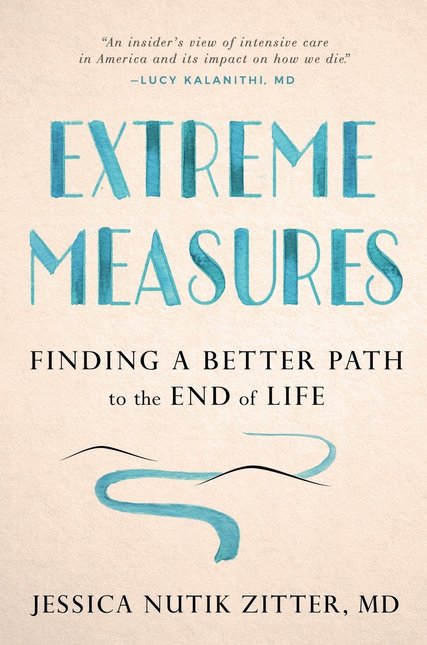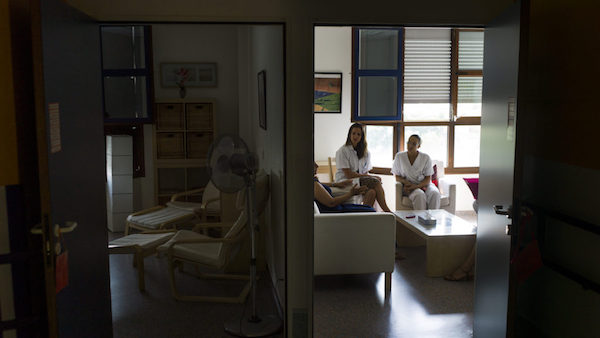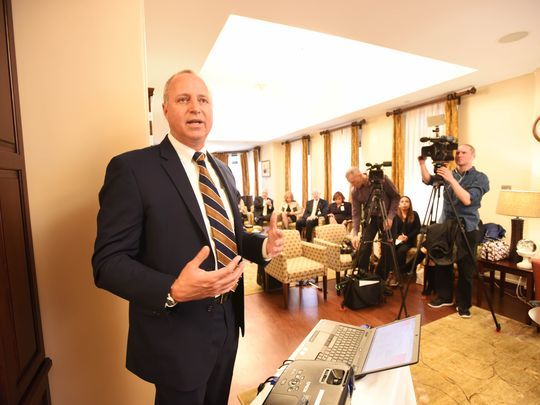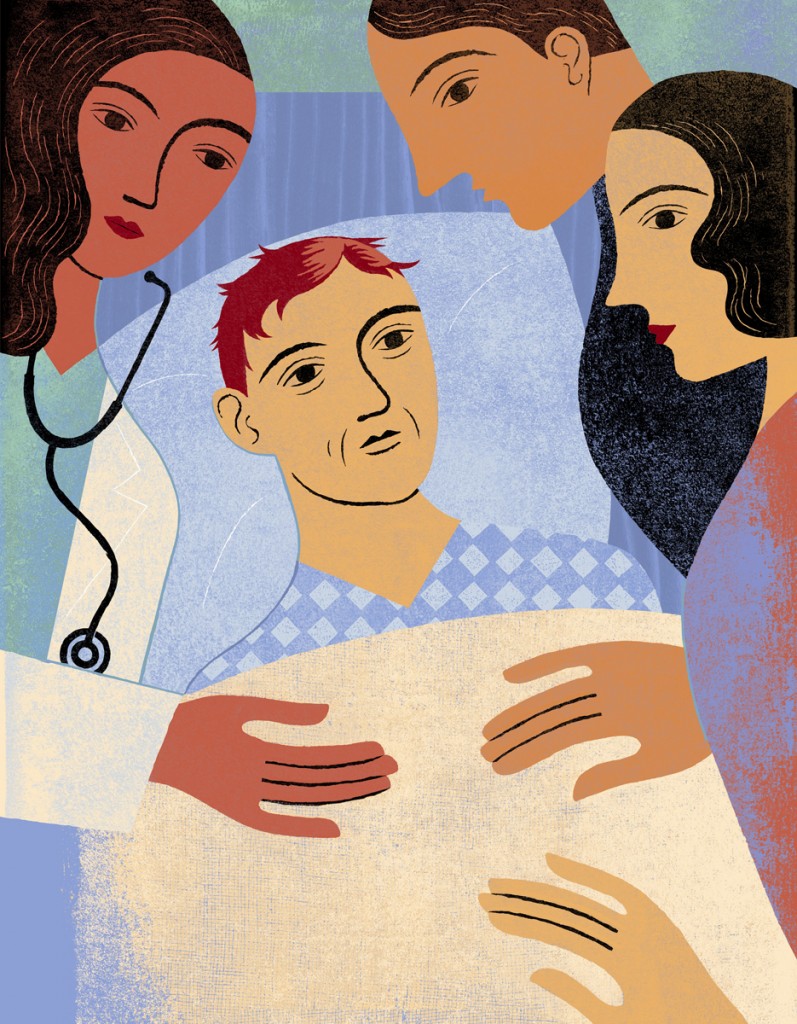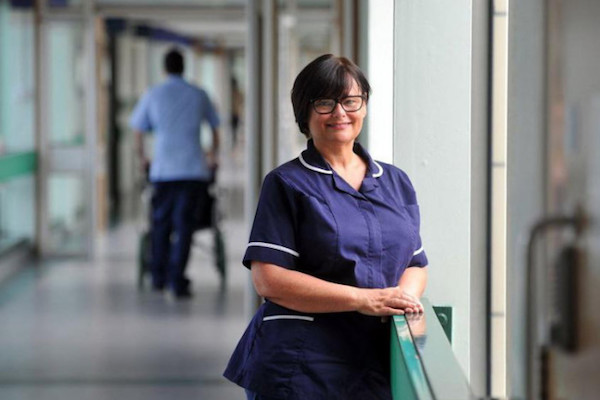
Alex Blake, who helped set up the Gold Line team following the death of her husband Iain
By Chris Burn
[D]ying at home is a sadly-unfulfilled wish for many terminally-ill patients – but a team of nurses working in North Yorkshire are starting to change that. Chris Burn reports.
“I’m passionate about end-of-life care. My husband died at home ten years ago and he had the most beautiful death – it is possible. Death is really important, it is the last activity of living. The way someone dies is left with those that are living; it is the families that will carry that with them.”
Nurse Alex Blake has played an important role in a pioneering team of nurses working in North Yorkshire to help terminally-ill people and their loved ones prepare for death in their final months, weeks, days, hours and minutes. She says she now hopes the Gold Line service which has been operating from Airedale Hospital for the past three years can be introduced across the country.
Across England, only one in five people die at home but around twice this number who use the service are able to pass away in their own house.
The phone line, which is manned around the clock by senior nurses, provides advice and guidance to people in the last year of their life and their loved ones to help with physical problems, as well as the inevitable emotional toll that comes with the prospect of impending death. The medical advice the team are able to provide also helps to take the pressure off local NHS services, with one-third of calls solved without additional referrals to doctors or district nurses.
However, the service is currently only available in Airedale, Wharfedale, Craven and Bradford. While similar support is offered in Scarborough and Ryedale for carers of people undergoing community-based palliative care, other areas of the county do not have such a system in place.
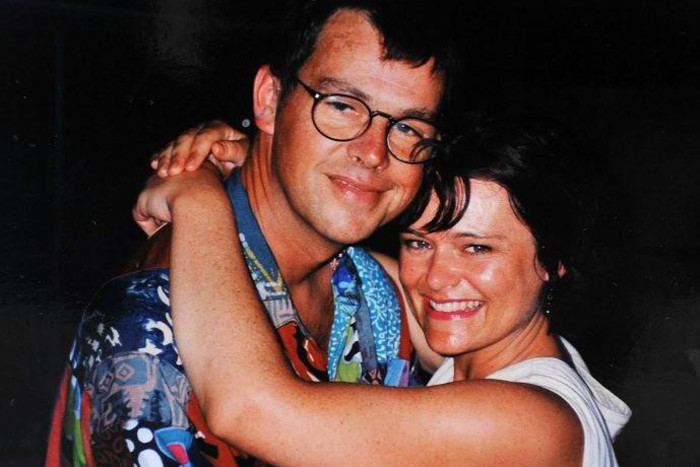
A recent North Yorkshire County Council review of end-of-life care suggested learning from the way Gold Line operates should be an area of development for the rest of the region. Alex says: “I believe everyone should be able to choose where and how they die and nurses at Gold Line are pivotal in making that happen. The service needs to be rolled out nationally so that everyone has equal choice at end of life.
“Even in East Lancashire, which is 20 minutes down the road, we have patients who come here but can’t use Gold Line because they aren’t in the right postcodes.”
Alex moved from a role in critical care to be part of the Gold Line team when it was founded three years ago. She has recently moved to a slightly different role within the telemedicine service at the Airedale Foundation NHS Trust focusing on end-of-life support in care homes but remains a passionate supporter of the work of Gold Line.
She says she has always had an interest in end-of-life care but tragically found out personally how the system operates when her husband Iain, a doctor who suffered with diabetes, died from renal failure at the age of just 49.
“I think we constitute success as helping people to die comfortably where they want and in the way they want. It was a major comfort to me and my children that Iain died a beautiful death at home, comfortable and with everyone around him.”
She says that experience has given her a greater ability to connect with those going through the experience of terminal illness affecting a loved one but adds that all those who work on the Gold Line team instinctively know the importance of empathy.
“Without a shadow of a doubt, I have got huge empathy and understanding of people’s fears and anxieties about death and the grief that come as someone approaches the end of their life. You have to have the right amount of empathy to do this job because it is not easy to have the conversations we are having.
“You do get more calls during the night when people are frightened, can’t sleep and are more worried. You have very emotional conversations with people who can be crying or angry. We speak to the patients wherever we possibly can but it tends to be the relatives we are supporting. They are the people who are helping that person to die. We might take anything up to 20 calls per day. You do receive very distressing calls when people have just died and their relatives are distraught.
“A huge part of the job is explaining what is actually happening; if someone’s chest is rattly and they are breathing differently you have to explain this is the process. There is a huge stigma about death in western culture. There are a lot of myths like people needing fluids when more fluids actually make things worse.
“It is emotionally draining at times. We get a lot of young people from in their 20s to in their 50s. It is particularly emotional when it is someone who is younger and the pain for the mother and father when a 20-year-old is dying. It is not easy.”
She says while the job can be tough, it is also hugely rewarding. Those who work on the team are sent “stacks” of thank you cards from bereaved families. “It is so touching and there is such an enormous amount of job satisfaction. It is not easy but it is a privilege helping someone to die well. Sometimes when we have had a difficult day, I say to my colleagues read some of the thank you letters – it just motivates you.”
Helen Livingstone, palliative care consultant at the Airedale NHS Foundation Trust, says when the service was started local GPs were encouraged to talk to people whose health issues meant it was likely they were approaching the final year of their life and explain this support system was available.
“They are very sensitive conversations but the value of having them is great. Their care is much better and they are much more likely to die in the place they choose to die.”
She says the service is particularly aimed at those who are unlikely to need specialist care such as hospices but still need support in the last months of their lives. Helen says Gold Line is a “really key part” of the local services involving GPs and district nurses which allow a far greater proportion of patients than the national average to die at home.
Stephen Lock, of Ben Rydding, near Ilkley, says the Gold Line service helped his wife Bea, who died from cancer, fulfil her final wishes to die at home. He has participated in a moving video to promote the work of Gold Line in which he explained how the team had helped make the best of a devastating situation.
“Whenever I rang day or night, they knew exactly who we were, knew all about Bea and didn’t seem to need to look it up on any kind of database. The night before Bea died, I could tell things were very, very different and I rang them and just said I have never seen anybody die, can you tell me what is going to happen? I didn’t want it to be a shock for me, I wanted to know what was going to come so that what she would see wouldn’t be panic.
“You do need help, you can’t do these things on your own. I remember I was holding her hand and I said to her don’t worry, we will look after our babies. That was very, very tender and very special and it could have been frightening and shocking.”
Hundreds helped by Gold Line team
Gold Line works with nearly 1,200 people in their last year of life, with nurses answering more than 500 calls a month.
Before Gold Line, if a person nearing end of life was experiencing symptoms, they would have called a doctor or an ambulance, and often would have been admitted to hospital.
Gold Line’s introduction has seen significant numbers of people avoid attending accident and emergency, having to be admitted to hospital and calling out their GP or community nursing team. In 2014/15, only 13 per cent of people registered with Gold Line died in hospital – nationally this figure was 58 per cent. Airedale NHS Foundation Trust won a £420,000 bid from the Health Foundation charity to start the scheme and is now funded by Clinical Commissioning Groups.
Complete Article HERE!

